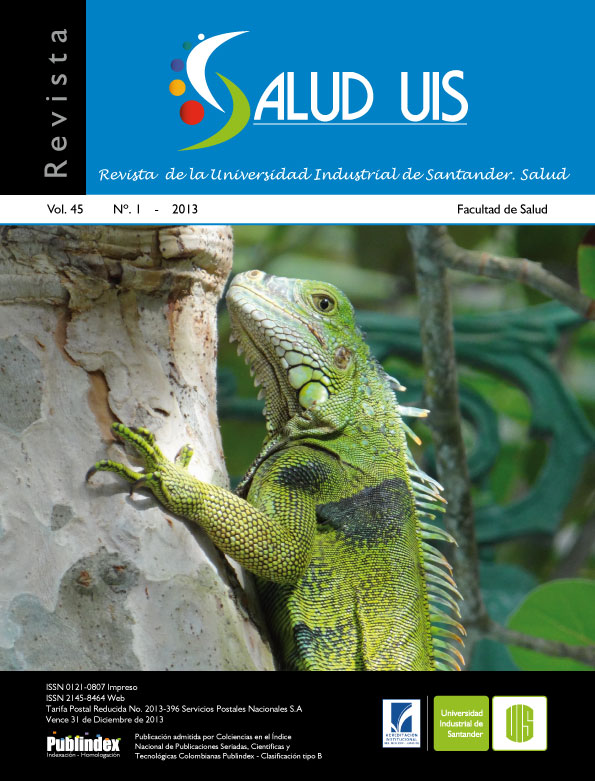Resumen
RESUMEN
Leishmaniosis, una enfermedad causada por un parásito protozoario, representa un serio problema de salud pública que amenaza a cerca de 350 millones de personas alrededor del mundo, de los cuales se cree que unos 12 millones se encuentran actualmente infectados (WHO 2010). A la fecha no existen vacunas contra las especies del parásito y el tratamiento está basado solo en la quimioterapia con medicamentos tóxicos, costosos, e inefcientes. Existe una necesidad urgente por mejores medicamentos contra Leishmania, el agente etiológico de la enfermedad. El principal medicamento en Colombia usado contra la leishmaniosis es el antimoniato de meglumine [nombre químico según los parámetrosde la International Union of Pure and Applied Chemistry (IUPAC): Hydroxy-dioxostiborane; (2R,3R,4R,5S)-6-methylaminohexane-1,2,3,4,5-pentol, (C7H17NO5)], el cual no es efciente en el tratamiento de infecciones causadas por Leishmania braziliensis, la especie más prevalente en la costa Caribe de Colombia. Métodos: En este trabajo efectuamos un tamizaje virtual in silico de varias bases de datos incluyendo ChemBridge y Pubchem. Con el objetivo de identifcar nuevos inhibidores, un total de 28.755 compuestos fueron tamizados virtualmente contra un modelo 3D de la enzima 6-phosphoglucono –lactonase (6-PGL) de Leishmania braziliensis. El acoplamiento molecular de las bases de datos se efectuó con el programa Sybyl 8.0 y AutoDock Vina. Resultados: mediante tamizaje virtual basado en la estructura se identifcaron10 compuestos, los cuales fueron posteriormente evaluados con AutodockVina y clasifcados de acuerdo a los puntajes de acoplamiento. Conclusiones: Estos nuevos potenciales inhibidores constituyen candidatos a medicamentos que deben ser evaluados biológicamente para defnir su valor como alternativas quimioterapéuticas en el tratamiento de estas infecciones parasíticas.
Palabras clave: leishmaniosis, tamizaje virtual, terapéutico, biblioteca virtual, base de datos.
NEW AGENTS WITH POTENTIAL LEISHMANICIDAL
ACTIVITY IDENTIFED BY VIRTUAL
SCREENING OF CHEMICAL DATABASES
ABSTRACT
Leishmaniosis, a disease caused by a protozoan parasite, remains a serious public health problem threatening about 350 million people around the world, of which 12 million are believed to be currently infected (WHO 2010). To date, there are no vaccines against the species of parasites and the treatment is based only on chemotherapy with toxic-, expensive- and ineffcient- drugs. There is an urgent need for better drugs against Leishmania, the etiological agent of the disease. The main anti-leishmanial drug used in Colombia is meglumineantimoniate [chemical name according to the International Union of Pure and Applied Chemistry (IUPAC): Hydroxy-dioxostiborane; (2R,3R,4R,5S)-6-methylaminohexane-1,2,3,4,5-pentol, (C7H17NO5)], which is not effcient in the treatment of infections caused by Leishmania braziliensis, the most prevalent specie in the Caribbean coast of Colombia. Methods: We performed an in silico virtual screening of several datasets including ChemBridge and Pubchem. We virtually screened a total of 28.755 compounds against a 3D model of 6-phosphoglucono -lactonase (6-PGL) from Leishmania braziliensis to identify novel inhibitors.Molecular docking of databases was performed using the software Sybyl 8.0 and AutoDockVina. Results: The initial virtual screening using a structure-based method identifed 10 compounds, which were later tested with AutodockVina and classifed according to their docking scores. Conclusions: These novel and potential inhibitors constitute new drug candidates that must be biologically tested to defne their value as an alternative chemotherapeutic agent in the treatment of these protozoan infections.
Key words: leishmaniosis, virtual screening, therapeutics, molecular docking simulation, drug search.
Se autoriza la reproducción total o parcial de la obra para fines educativos, siempre y cuando se cite la fuente.
Esta obra está bajo una Licencia Creative Commons Atribución 4.0 Pública Internacional.
